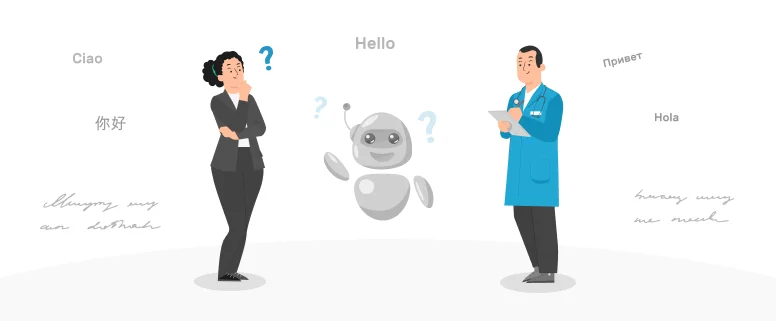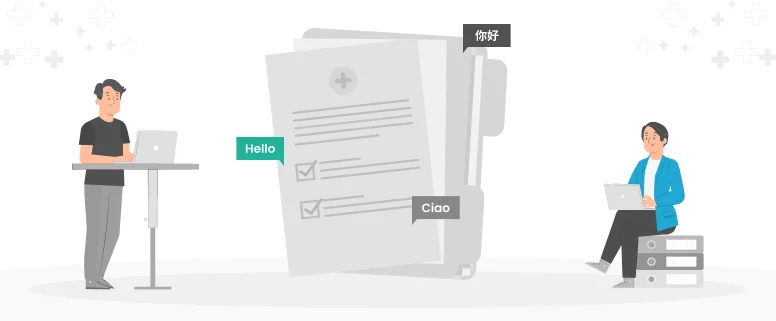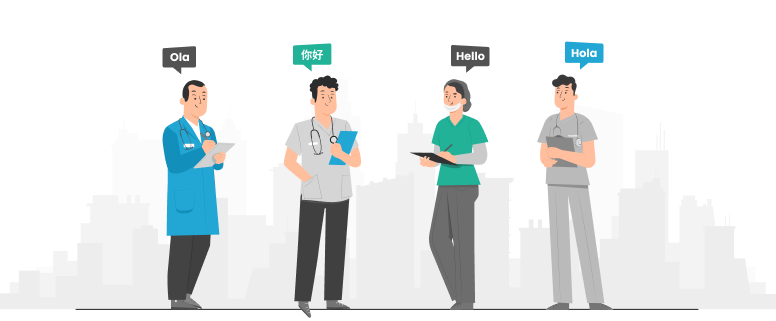The medical community, doctors, pharmacists, and medical translators take patient safety seriously, yet hard-to-read prescriptions continue to put people at risk every day.
Global medical regulations have pushed for electronic prescriptions, AI is advancing in handwriting recognition, and medical interpreters play a crucial role in preventing doctor handwriting translation mishaps.
But is this enough?
Can technology, regulations, and professional translation services eliminate the dangers of unreadable prescriptions?
In this article, we will evaluate and discuss the effectiveness of expert translations, AI-powered tools, and regulations to avoid medical malpractice issues caused by sloppy doctor handwriting.
Handwriting Errors & Medical Malpractice
How Common Is It?
Handwritten prescriptions have been directly and indirectly responsible for around 7,000 deaths in the U.S. every year. It highlights the critical need for legible medication orders.
Who is Responsible for Medical Misinterpretations?
Liability depends on various factors, including legal regulations, professional responsibilities, and the circumstances of the error.
Doctors: The Forefront of Responsibility
Why Doctors Can Be Held Liable:
- Illegible Handwriting
- Incorrect or Ambiguous Prescription
- Failure to Provide Proper Instructions
Legal Precedents:
Doctors have to issue prescriptions in a legible format; otherwise, it can lead to malpractice claims. For instance, in the U.S. and the EU, e-prescriptions are mandated to reduce medical errors.
Pharmacists: The Critical Checkpoint
Why Pharmacists Can Be Held Liable:
- Dispensing the Wrong Medication
- Failure to Verify Ambiguous Prescriptions
- Miscommunication with Patients
Legal Precedents:
In the United Kingdom and Canada, pharmacists are legally required to verify unclear prescriptions. If they dispense medication without verifying it and an error occurs, they can be sued for malpractice.
Translators: The Silent but Crucial Link
Why Translators & Interpreters Can Be Held Liable:
- Inaccurate Doctor Prescription Translations
- Failure to Convey Medical Warnings Properly
- Professional Duty of Accuracy
Legal Precedents:
In Germany and the U.S., medical translators working in hospitals or pharmacies may face legal consequences if their mistranslation causes any sort of harm. However, liability depends on whether the translator was certified and whether they acted negligently.
Translators & Interpreters – How Far Language Professionals Can Help?
Role of Medical Interpreters in Real-Time Patient Communication
Prevent Real-Time Dosage and Medication Errors
Medical interpreters make sure that patients fully understand their medication regimens, which also reduces the likelihood of errors. According to a research study, the use of qualified interpreters was associated with a decrease in medication errors, and it also improved patient comprehension.
Handle Non-Native Patients
Patients with limited English proficiency have difficulty in comprehending prescriptions, so they surely need professional healthcare interpretation services. Medical interpreters facilitate communication between healthcare providers and non-native patients to eliminate linguistic barriers.
Support Pharmacists
Medical interpreters can assist pharmacists to effectively communicate with non-English-speaking patients so that patients understand how to take their medications safely. It also reduces the risk of prescription errors and allows patients to follow the treatment plan properly. A ResearchGate publication showed that only 55% of healthcare providers were satisfied with their communication with patients with limited proficiency in English, emphasizing the need for interpreter services.
How Expert Translators Decode Doctors Handwriting
Understand the Common Patterns
Pattern recognition includes identifying characteristic letter formations, common abbreviations, and individual physician writing styles. This skill is developed through years of experience working with medical documentation. For example, experienced translators recognize that a seemingly incomprehensible scribble with a distinctive hook might consistently represent “hydrochlorothiazide” or that a particular physician always writes “q.i.d.” (four times daily) in a unique way.
ISO Certified and HIPAA Compliant Translations
Doctor handwriting translations are critical in nature, so you can’t just hire a random freelance translator. It is crucial to partner with a reliable medical translation agency with a proven track record and native level expert translators. CCJK is a trusted company in this matter since they have already worked with global healthcare providers and have high client satisfaction rates.
Medical Terminology Mastery
Translators typically have extensive vocabularies for specialized medical terms. This knowledge enables translators to make right guesses even when portions of words are illegible. For instance, if only “-mycin” is clear in an antibiotic prescription, the translator might narrow possibilities to erythromycin, clindamycin, or vancomycin based on the context.
Leverage Context Clues
Experienced translators don’t work in isolation but use surrounding information to inform their interpretations. For accurate translations, translators can review the patient history because patient diagnosis provides critical context for medication choices. It will give them some context about the medication and relevant medicines that the doctor would have prescribed. Moreover, patient demographics (age, weight, gender) help verify appropriate dosing and provide some context about the doctors’ prescription.
Cross Checking with Medical Professionals or AI
When uncertainty remains, skilled translators establish verification protocols with healthcare providers. Established communication channels include dedicated phone lines and secure messaging. For example, translators at major hospitals implement “read-back” procedures for high-risk medications, where interpretations are verbally confirmed before dispensing.
Leading healthcare systems implement hybrid approaches where AI provides initial interpretation, which is then verified by human experts. Translators can also leverage these tools for verifying the doctor handwriting translation online; it will add another layer of QA to the translations.
E-Prescriptions & AI – Can Technology Fix the Problem?
Reducing Errors with Automated Checks
While professional human translations provide critical accuracy and contextual understanding, some electronic prescription systems incorporate automated verification features that help identify potential errors before medications reach patients.
- Automated checks function as a digital safety net within the medication ordering process.
- These systems can verify appropriate dosing based on patient parameters like weight and age.
- Drug-drug interaction screenings alert providers to potential conflicts between medications.
- Allergy checks automatically flag prescriptions that may cause adverse reactions.
Electronic Prescriptions for Improved Safety
E-prescriptions address workflow issues rather than attempting to improve the interpretation of handwriting. This practice has gained adoption because it redesigns the process rather than attempting to perfect a flawed one.
- E-prescriptions create a direct digital connection between prescriber, pharmacy, and patient records.
- Digital prescribing eliminates transcription steps where errors commonly occur, and you can seamlessly translate doctors’ handwriting online.
- Medication history becomes readily accessible at the point of prescribing.
- Standard terminology and formats reduce variation and interpretation requirements.
AI-Powered Handwriting Recognition
For contexts where handwritten medical documentation persists, AI recognition systems offer technology-based solutions to interpretation challenges.
- Machine learning algorithms analyze handwriting patterns to identify possible matches.
- AI systems can be trained on specific providers’ writing styles to improve accuracy.
- Natural language processing helps validate interpretations within medical contexts for doctor prescription translation.
- These systems can identify potential errors based on medical guidelines and patient information.
How Can AI Support Translators and Healthcare Providers?
Benefits:
- Reduce human interpretation errors and translate doctor writing for medical documentation.
- Speeds up workflow processes by automating initial interpretation.
- Creates permanent digital records of originally handwritten information.
- Provides audit trails for prescription processing.
- Enables integration with drug interaction databases and clinical decision support systems.
Limitations:
- No AI system currently achieves 100% accuracy in interpreting the most challenging handwriting.
- Medical context understanding still requires human oversight.
- Implementation requires significant investment in technology and training.
- Regional variation in medical terminology and abbreviations presents challenges.
- Privacy and data security considerations must be carefully addressed while doing doctor writing translation.
Regulations – The Most Effective Solution?
Some Common Legal Standards
United States:
- The Institute for Safe Medication Practices (ISMP) advocates for the elimination of handwritten prescriptions to reduce errors.
- Some states require prescriptions to be “legibly printed or typed,” as specified by Florida statutes.
European Union:
- The European Directorate for the Quality of Medicines & HealthCare (EDQM) establishes quality standards for medicines, including guidelines that impact prescription clarity.
Australia:
- Good documentation practices recommend that handwritten entries be made in indelible ink and be free from errors to provide clarity in medical records.
Pharmacist Verification Requirements
Regulatory authorities follow certain verification protocols that pharmacists must conform to when processing prescriptions to enhance accuracy and patient safety.
- Pharmacists are a verification checkpoint in the medication dispensing process.
- Requirements include verification of patient information, medication details, and dosing appropriateness.
- When handwriting is unclear, pharmacists are required to contact prescribers for clarification.
- Documentation of verification steps creates an audit trail for quality assurance.
These verification requirements acknowledge that while flawless handwriting may be unattainable, systematic checks can prevent errors from reaching patients.
Standardized Medical Abbreviations and Formatting
It directly addresses a challenge in interpreting handwritten medical information: the wide variation in how similar information can be expressed. This is yet another reason why healthcare providers should partner with an experienced translation company like CCJK to ensure professionalism and compliance in translated prescriptions.
- Regulatory bodies and healthcare organizations have developed lists of approved medical abbreviations.
- “Do Not Use” lists identify abbreviations prone to misinterpretation.
- Standardized prescription formats specify where and how information should be presented.
Ethical Guidelines for Translating/Interpreting Prescriptions
To guarantee ethical conduct, interpreters adhere to established guidelines. Below are key principles that linguists must follow:
- Language experts must maintain the privacy of all information obtained during interpreting assignments. Exceptions apply only when disclosure is required by law or necessary to prevent harm.
- They should accept assignments only if they possess the necessary skills and knowledge, ensuring accurate and effective interpretation.
- Professionals must avoid any personal biases of interest that could influence their work.
- Interpreters should show respect to all parties and adhere to professional standards.
- They are responsible for accurate representation of qualifications, fair compensation practices, and maintaining appropriate working conditions.
- Translators should keep learning to enhance their skills and stay updated with industry standards.
Contact CCJK to Discuss Your Medical Translation Needs
Takeaways
- Professional translations can help prevent errors for multilingual patients.
- AI-powered handwriting recognition is improving; however, they struggle with complex medical scripts.
- E-prescriptions reduce errors and are becoming mandatory in many countries.
- Working with a trusted translation agency helps healthcare providers meet regulatory standards and guarantee the accuracy of multilingual prescriptions.
- Regulations in healthcare are pushing for standardized prescription formats and mandatory digital records.
- The future solution lies in a combination of AI assistance, strict regulations, and trained professionals working together for improved healthcare practices.





